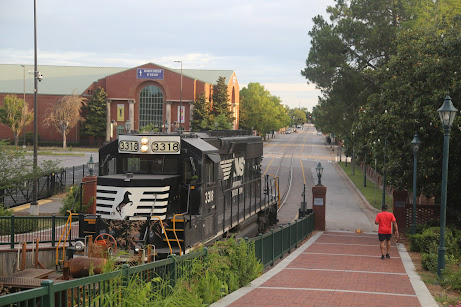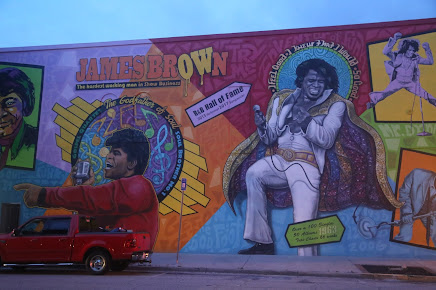Day 1
Tuesday, June 1
My first visit to the city of Augusta was six years ago. I came here simply because it’s one of the largest cities in my state and I had never been there. The day was spent walking the along the Canal Trail, exploring the city and catching some great live music at a place called the Cotton Patch. It never occurred to me to explore what’s just across the Savannah River in South Carolina. That’s why I started the roadtrip here instead of simply driving through.
By the early 1800's, Augusta had established itself as supply depot and a transportation hub for goods being sent down river to Savannah and Charleston.
In 1821, businessman Henry Schultz decided to create some competition. He built his own supply depot across the river and named the new community Hamburg, after the city of his birth.
Twelve years later, the new town was thriving. The South Carolina Canal and Railroad even built a 138 mile line to Savannah, the longest single track railroad of the day.
Everything changed in 1853 when the railroad decided to extend the line across the river into Augusta. Suddenly, Hamburg wasn’t quite as important and the town’s fortunes started to fade. The supports for the old railroad bridge are still standing.
By the Civil War, most of the businesses had moved back across the river. After the war, freed blacks started settling in the mostly abandoned Hamburg. The town started coming back. The state government acknowledged the rebirth of Hamburg by authorizing the community to establish it’s own local militia.
Doc Adams was the militia’s leader. On July 4th, 1876, we was leading a parade in celebration of the nation’s Centennial. Along the road, the parade was met by two white farmers, who insisted the parade stop, so they could pass.
Adams told them there was plenty of room to go around the parade, and eventually pulled everyone over to let them pass. Adams was arrested the next day for the crime of blocking a public road.
Four days later, he was blocked from entering the courthouse by paramilitary white supremacists who called themselves Red Shirts. Adams sough cover in the militia’s armory, along with forty others.
When the shooting ended, three were dead. Two were members of the militia. One was a member of the Red Shirts. Four members of the militia were later captured and executed by the Red Shirts.
In a city park, there’s a monument to Tom Meriwether, the one white guy who died. Erected in 1916, the obelisk proclaims him to be a “young hero” in “remembrance of all who know high and generous service in the maintaining of those civic and social institutions which the men and women of his race had struggled through the centuries to establish in South Carolina.”
In the end, eighty-seven Red Shirts were charged in the massacre, none were ever tried.
The seven Freemen who died weren’t memorialized until 2016. That's when local community leaders dedicated a historical sign and a simple stone marker with the names.
The memorial sits in front of the old Hamburg meeting hall. It had been moved here piece by piece to the community of Carrsville due to repeated flooding of the Savannah River.
There isn’t much left of Hamburg, but I did go looking. I had seen photos and had GPS coordinates for the Rutherford Brickyard. It was built in 1895 and closed after repeated river flooding. I drove down a few rough, dirt roads, but never found anything that looked like the photos. The one dirt road I couldn't access was full or construction vehicles.
The same happened when I went looking for the old Hamburg Railroad Depot.
On my last visit, I took a walk along the Augusta Canal. It was still a city project in progress. On this trip, I started at a place called the Savannah Rapids Pavilion. That's where you'll fine the city dam and the head of the canal. The dam also supplies some hydroelectric power, as well as the city's drinking water.
I've seen people leave locks on bridges before, just not quite this large..
After a walk partway down the canal path..
It was time to start thinking about a late lunch. A few blocks north of the motel, is the Savannah River Brewing Company. They even had a guy in the front making tacos. Great beer and a great staff. A good way to start the trip.
I returned to the canal after lunch, though further south. There's a small parking lot on the far corner of Eisenhower Park's ballfields. Cross the canal on the footbridge and you're at the water treatment plant. A short walk to cross the railroad tracks and you get here...
I had been looking forward to revisit to the Cotton Patch Jazz and Blues Club that evening. Sadly, they closed four years ago after Hurricane Irma. Instead, I simply walked along the river.
Eventually, my patience was rewarded...
As you might expect, in the town that brought us James Brown, he's everywhere.
Dinner was in an interesting place called Beamies. It just happened to be adjacent to the spot I shot sunset. There was just something about the light and the pedestrian bridge.


























No comments:
Post a Comment